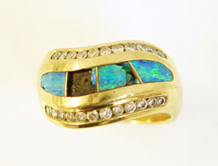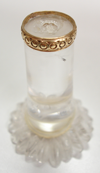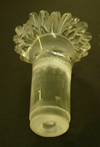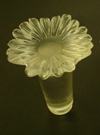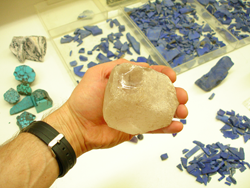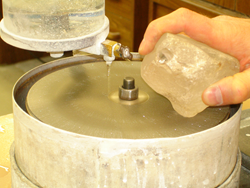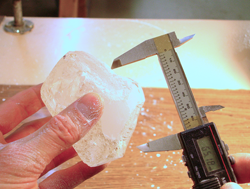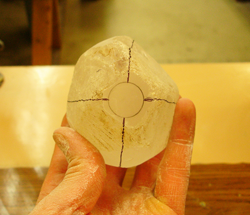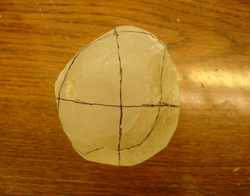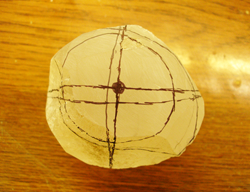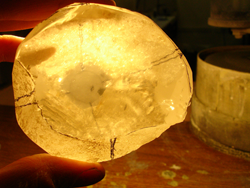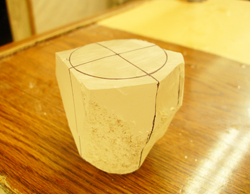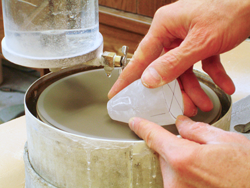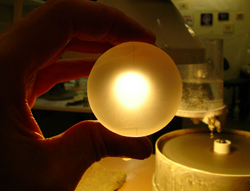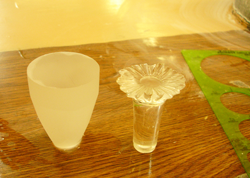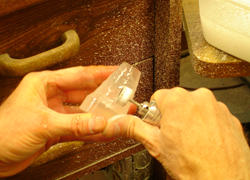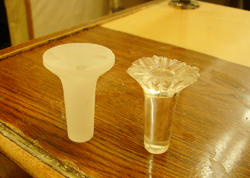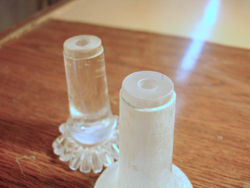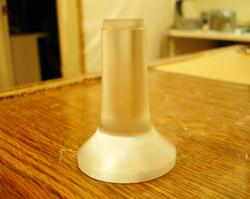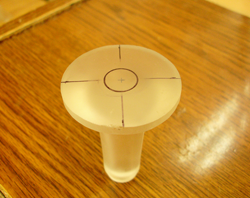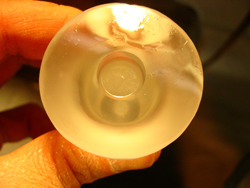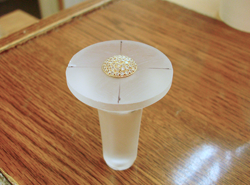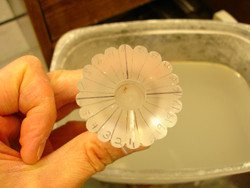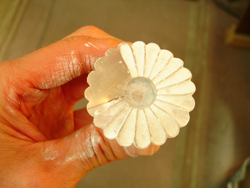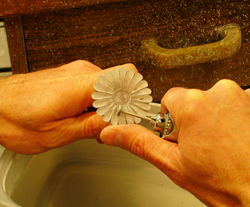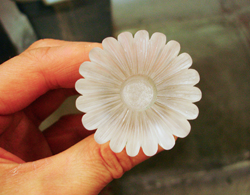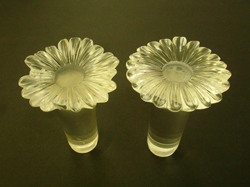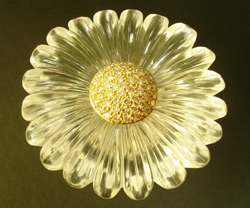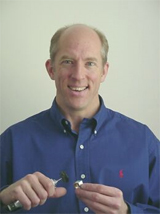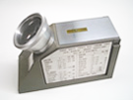I Carved a new Quartz Daisy Flower for the Cane Handle
This piece was originally made circa. 1900.
It was dropped on a hard surface which caused many of the Quartz flower petals to be broken.
The jeweler who purchased the piece needed a new one carved in order to restore the antique walking cane to its original condition.
I first needed to find a flawless piece of Quartz to do the carving. The original handle was not flawless but I wanted the new one to be of a higher quality than the original considering the amount the jeweler was investing in the piece.
Below, you will see photos and description of the cutting process.
Peering into the crystal
I have put some oil on the sawed surface to enable me to see into the piece.
I can now see that there is a large enough area inside the crystal to carve a flawless piece, after I cut off the outer sides to remove the flaws which do exist.
In this photo, on the right side you will see a couple of bright reflections which are cracks. They will be cut off later.
Rough shaping of the flower petals
Here I am roughly shaping out the daisy petals.
Each petal is a bit different. After making one petal, the next one needs to be lower and tilted to the right. Then the next one needs to be higher than the previous one and tilted to the left.
It is almost impossible to make an exact carbon-copy (or in this case a Quarz copy) of a non-geometric form, but I do the best I can.
Adding more detail
When you enlarge this photo you will see that I have added long detail lines in the petals.
At this stage the flower has a nice frosted look, which I liked. But the jeweler wanted it polished, like the original.
The next steps remove the frosted surface. I use various hand tools which leave a finer and finer surface until I have what is considered by cutters to be a pre-polished surface.

